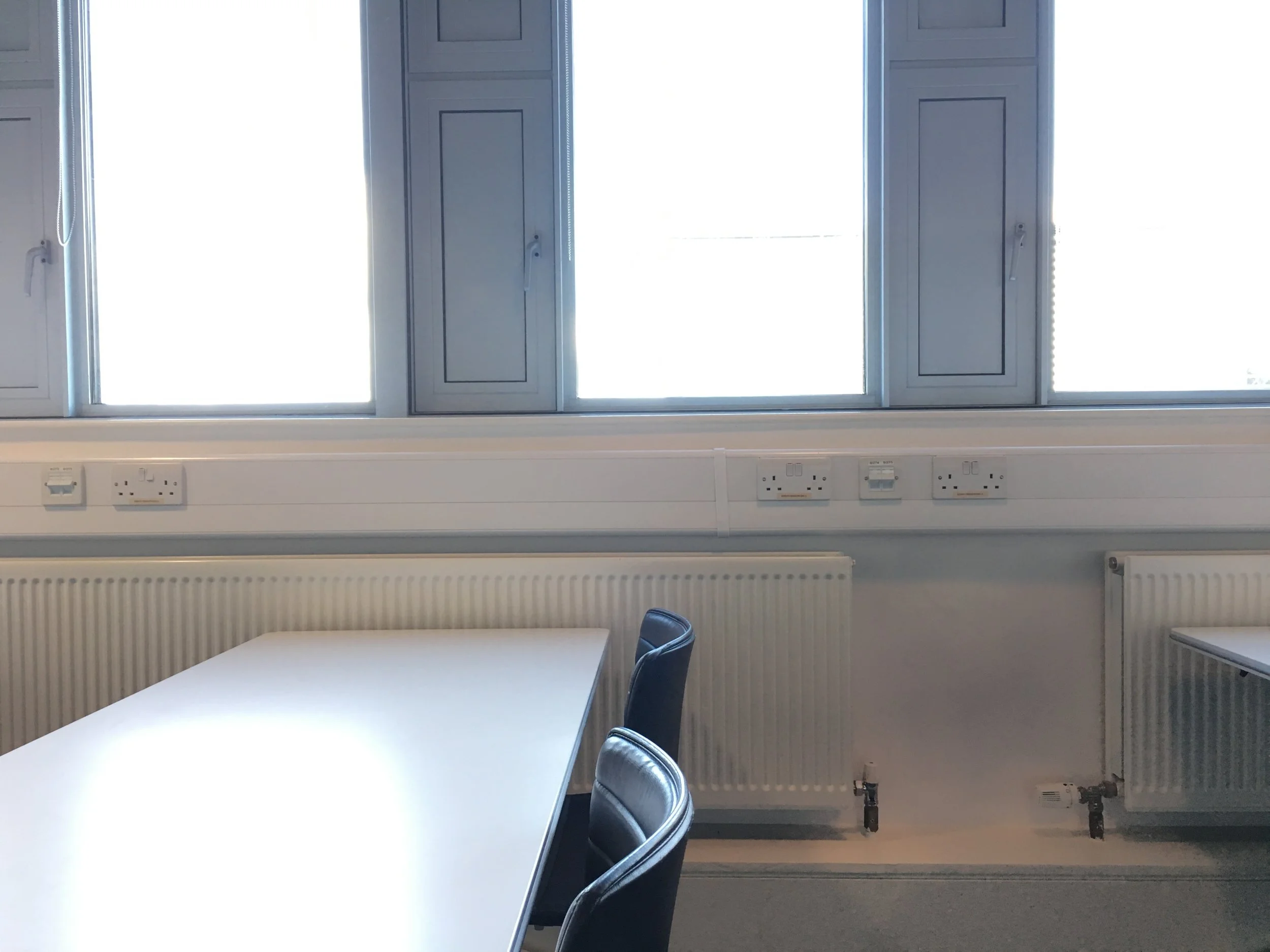Energy Systems and Energy Performance
The energy consumption is metered in four main areas: Heat pump, lighting, general services and a circulating pump for the heating systems (radiators).
Heating system
The heating system used in NBERT uses air to water heat pump which is located at roof level as is shown in Figure 1. Heat is delivered via low surface temperature radiators (see Figure 2). The heating system is controlled with a building management system (BMS), where building zones are maintained at a set-point of 21°C for all spaces types during winter months and uncontrolled for summer months. Humidity is not taken into account in the buildings control strategy for heating. The set-point temperature supplied to radiators via low temperature hot water (LTHW) circuit used is weather compensated. This supply set-point temperature for LTHW is at a maximum of 35°C given external conditions of less than 10°C. For temperatures greater than 10°C the supply set-point varies linearly between 35°C and 25°C. The system is controlled on a common return water temperature with localised occupant control at zone level achieved using thermostatic radiator valves. The system is also operated on a time scheduled basis with different schedules depending on the academic calendar.
Heat pump specifications
- Model reference: Dimplex LA 28AS
- Type: Air to Water
- Maximum heating power output: 28kW
- COP: 3.6
- Ambiant air temperature: 10 °C
- Supply water temperature: 35 °C
Radiator specifications
- Model reference: H21 and RX
- System: LTHW
- Type: Steel tube
- Air entering temperature: 20 °C
- Heating Water EWT: 45 °C
- Heating Water EWT: 40 °C
- Max water velocity: 2 m/s
- Max system operating pressure: 4.5 bar
Internal heat gains
The building has around 10-12 permanent occupants during typical academic times, during the year. The building has mixed uses, with some rooms within the building are used for meetings and others for lectures. In the main office spaces in the building there are 50% laptop and 50% desktop workstations. The commonly used appliances are mainly printers. The lighting system in the building varies with types of lights used throughout the building. The office spaces use recessed T16 (4x18W) fluorescent luminaires while other spaces use recessed downlighters (2x42W). There is the capability within the building to control lights based on occupants presence and daylighting, however this is currently not being used. On the right (Figure 3) the small power and appliances for the open plan office of the building can be seen. Below you can see the estimated installed power and power density in the building currently for lighting and small power appliances. These values indicate the the small power appliances are greater than the recommended values.
Lights Small power appliances
- Installed power: 2.8 kW 4.9 kW
- Installed power density: 12.5 W/m² 22 W/m²
Micro-grid
The virtual smart grid comprises the national grid, NBERT building, NBERT micro-grid and the CIT main campus building. The micro-grid powers the Zero2020 building while also exporting energy to the national grid.The building generates and receives renewable energy from a solar PV array on the roof and a wind turbine nearby.
- Photovoltaic power system (static): 24 kWp
- Photovoltaic power system ( dynamic tracking): 0.5 kWp
- Wind turbine power system: 2.5 kWp
- Battery (lead acid): 1350 Ah
Energy Performance
Energy consumption data
- Typical energy consumption: less than 90kWh/m²/a
- Energy reduction of 56% between the old and the new building
- Heating system better than asked by the PassivHaus criteria for specific heating (<15kWh/m²/a)
- General services and lighting: 70% of the energy consumption in most months. ( 75 kWh/m²/a)
Figure 1: Heating system located at roof level
Figure 2: Low temperature radiators in building
Figure 3: Lights and small power appliances in the open plan office in the building
Figure 4: Schematic description of Zero2020 testbad infrastructure
A few relevant documents about micro-grid:
Economic optimisation for a building with an intergrated micro-grid connected to the national grid World Congress on Sustainable Technologies, 2015
Figure 5: Annualised Energy Consumption in the zero2020 building by main consumer



